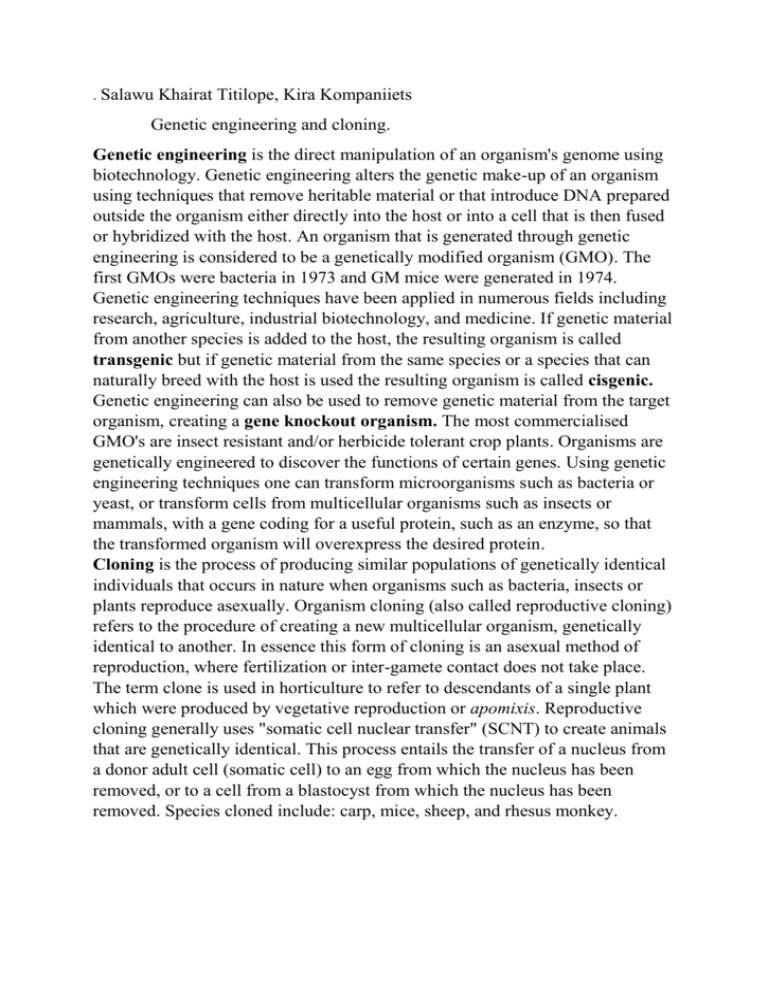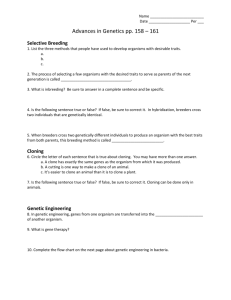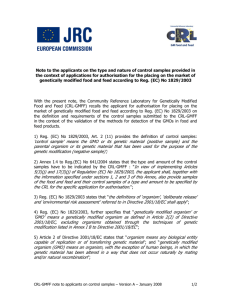Genetic engineering
advertisement

. Salawu Khairat Titilope, Kira Kompaniiets Genetic engineering and cloning. Genetic engineering is the direct manipulation of an organism's genome using biotechnology. Genetic engineering alters the genetic make-up of an organism using techniques that remove heritable material or that introduce DNA prepared outside the organism either directly into the host or into a cell that is then fused or hybridized with the host. An organism that is generated through genetic engineering is considered to be a genetically modified organism (GMO). The first GMOs were bacteria in 1973 and GM mice were generated in 1974. Genetic engineering techniques have been applied in numerous fields including research, agriculture, industrial biotechnology, and medicine. If genetic material from another species is added to the host, the resulting organism is called transgenic but if genetic material from the same species or a species that can naturally breed with the host is used the resulting organism is called cisgenic. Genetic engineering can also be used to remove genetic material from the target organism, creating a gene knockout organism. The most commercialised GMO's are insect resistant and/or herbicide tolerant crop plants. Organisms are genetically engineered to discover the functions of certain genes. Using genetic engineering techniques one can transform microorganisms such as bacteria or yeast, or transform cells from multicellular organisms such as insects or mammals, with a gene coding for a useful protein, such as an enzyme, so that the transformed organism will overexpress the desired protein. Cloning is the process of producing similar populations of genetically identical individuals that occurs in nature when organisms such as bacteria, insects or plants reproduce asexually. Organism cloning (also called reproductive cloning) refers to the procedure of creating a new multicellular organism, genetically identical to another. In essence this form of cloning is an asexual method of reproduction, where fertilization or inter-gamete contact does not take place. The term clone is used in horticulture to refer to descendants of a single plant which were produced by vegetative reproduction or apomixis. Reproductive cloning generally uses "somatic cell nuclear transfer" (SCNT) to create animals that are genetically identical. This process entails the transfer of a nucleus from a donor adult cell (somatic cell) to an egg from which the nucleus has been removed, or to a cell from a blastocyst from which the nucleus has been removed. Species cloned include: carp, mice, sheep, and rhesus monkey.











